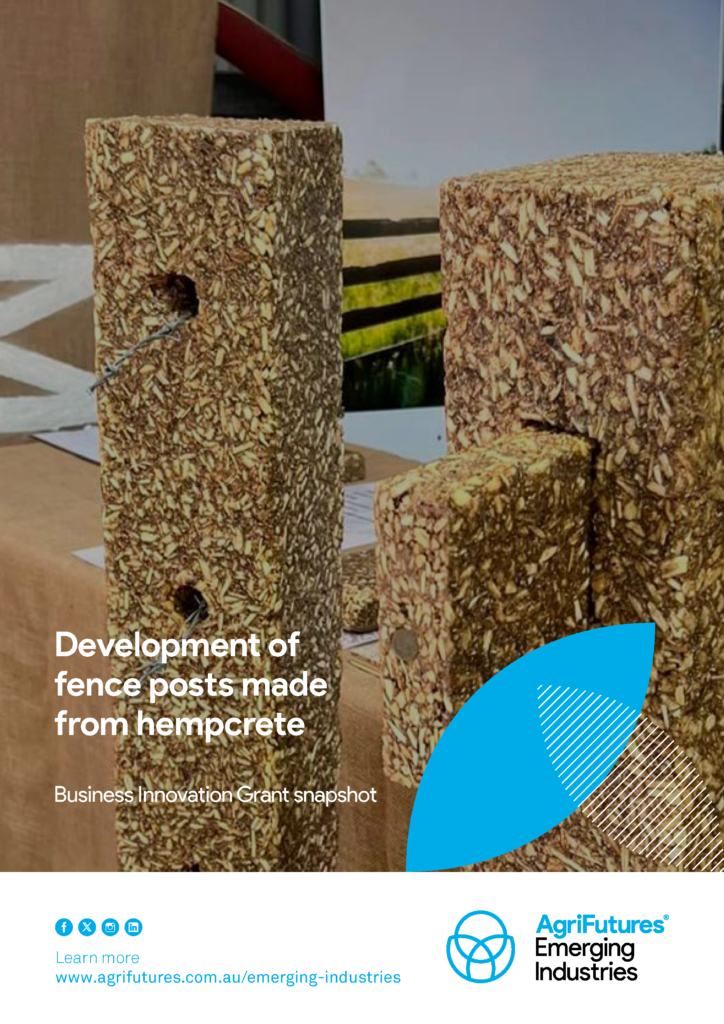The increasingly severe bushfire seasons experienced in Australia in the past decade, coupled with the need for a construction material that has a lower environmental footprint, has prompted research into a sustainable, cost-effective, fire-resistant fencing material for the Australian agriculture sector.
Traditional fencing materials include wood, concrete and steel. Wood supply is constrained due to conservation of forests and competition from the building sector; wood also requires regular maintenance and replacement. Concrete and steel, while durable, have significant environmental impacts, contributing 7.0% and 7.2% of global greenhouse gas emissions, respectively. A hemp fibre crop, conversely, can absorb up to 22 tonnes of carbon dioxide per hectare. When the biomass is used in hempcrete, the carbon is captured and stored.
Against this backdrop, this project developed a fence post using hempcrete, a construction material made from hemp hurd and a lime-based binder, which will be marketed as an alternative fencing product for farmers. The developed product uses a suitable mix of hurd and binder, and has a reinforcement system that uses hemp, rather than steel. The rebar, composed of hemp bast fibres and a proprietary binder, has a higher tensile strength than steel while being four times lighter.





